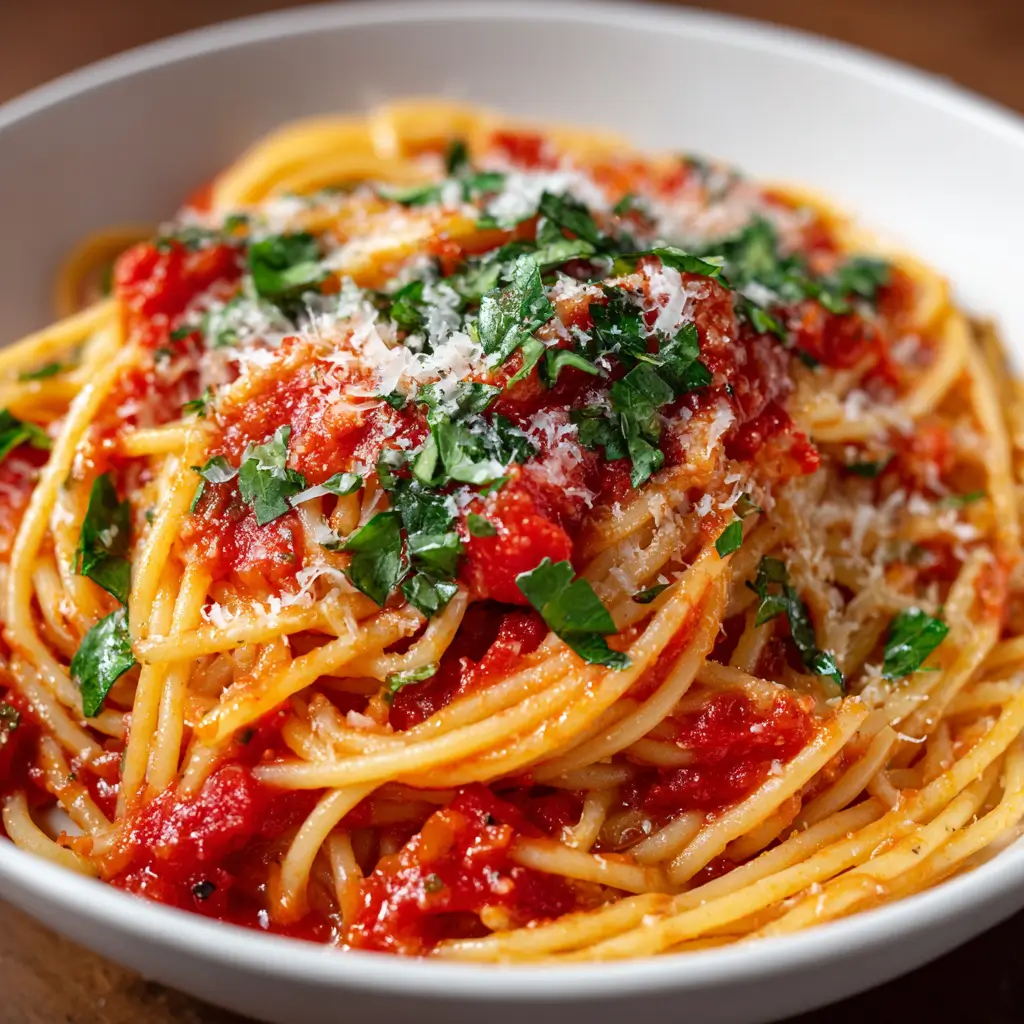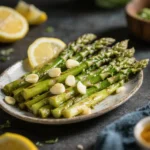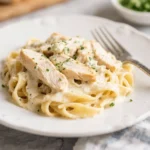Spaghetti with Fresh Tomato Sauce: A Timeless Italian Classic
There are few dishes as universally beloved and deceptively simple as spaghetti with fresh tomato sauce. This classic Italian staple captures the essence of Mediterranean cuisine—fresh ingredients, vibrant flavors, and a celebration of seasonal produce. Whether enjoyed on a cozy evening at home or served during a festive summer gathering, this dish brings comfort and satisfaction in every bite. In this comprehensive guide, we’ll explore everything you need to know about making the perfect plate of spaghetti with fresh tomato sauce—from its historical roots to ingredient nuances, step-by-step instructions, health benefits, variations, and more.
The History of Spaghetti with Fresh Tomato Sauce
The origins of spaghetti with tomato sauce trace back to southern Italy, particularly Naples, in the 18th century. While pasta had been a dietary staple in Italy for centuries—introduced through Arab influence during the Middle Ages—the incorporation of tomatoes into Italian cooking was a later development. Tomatoes, native to the Americas, were brought to Europe by Spanish explorers in the 16th century. Initially regarded with suspicion and considered poisonous by many Europeans due to their relation to the nightshade family, tomatoes slowly gained acceptance over time.
By the late 1700s, Neapolitans began using tomatoes in sauces for pasta, creating what would become one of Italy’s most iconic culinary contributions. The simplicity of combining al dente spaghetti with a bright, herb-kissed tomato sauce reflected the cucina povera (peasant cooking) tradition—making delicious meals from humble, readily available ingredients. Over the centuries, this dish evolved with regional twists but remained rooted in freshness and balance. Today, spaghetti with fresh tomato sauce is celebrated worldwide as a symbol of Italian culinary elegance and rustic authenticity.
Ingredients Breakdown: What Makes the Sauce Shine?
The magic of this dish lies not in complexity, but in quality. Each ingredient plays a crucial role in building layers of flavor while maintaining the integrity of simplicity. Here’s a detailed breakdown:
- Fresh Ripe Tomatoes: The heart of the sauce. Choose vine-ripened, juicy tomatoes like Roma, San Marzano, or heirloom varieties for the best flavor. Their natural sweetness and acidity create a balanced base without needing excessive seasoning.
- Garlic: Adds aromatic depth. Freshly minced or thinly sliced garlic sautéed gently in olive oil infuses the sauce with warmth and subtle pungency.
- Extra Virgin Olive Oil: High-quality EVOO is essential—it contributes fruitiness and richness, enhancing both taste and texture.
- Fresh Basil: Provides a fragrant, slightly peppery note that complements the tomatoes beautifully. Added at the end, it preserves its volatile oils and bright green hue.
- Onion (optional): Some versions include finely diced yellow or red onion for added sweetness and body, though purists may omit it to keep the focus on tomatoes.
- Salt and Black Pepper: Simple seasonings that elevate all other flavors. Sea salt works best for its clean mineral profile.
- Red Pepper Flakes (optional): For a touch of heat, a pinch can be added while sautéing the aromatics.
- Sugar (optional, rarely needed with ripe tomatoes): Only used if the tomatoes are overly acidic; high-quality ripe ones usually don’t require it.
- Salt-Cured Anchovy (optional): Not traditional in all recipes, but a small piece melted into the oil adds umami depth without tasting fishy.
- Pasta Water: Often overlooked, starchy pasta water is key to emulsifying the sauce and helping it cling perfectly to the spaghetti.
- Dried Spaghetti: Best when made from durum wheat semolina for its firm texture and ability to hold up to sauce.
- Freshly Grated Parmesan or Pecorino Romano (optional): For serving—adds salty, nutty complexity.
The beauty of this recipe is its flexibility. With just a handful of ingredients, each chosen with care, you can achieve restaurant-quality results at home.
Step-by-Step Recipe: Crafting the Perfect Bowl
Follow these detailed steps to make an authentic, flavorful spaghetti with fresh tomato sauce that bursts with summer freshness.
Ingredients
- 1 lb (450g) dried spaghetti
- 2 lbs (900g) ripe fresh tomatoes (Roma or San Marzano preferred)
- 4 cloves garlic, thinly sliced or minced
- 1/4 cup extra virgin olive oil
- 1 small yellow onion, finely diced (optional)
- 1/2 teaspoon red pepper flakes (adjust to taste)
- 1 teaspoon sea salt (plus more for pasta water)
- Freshly ground black pepper, to taste
- 1/2 cup fresh basil leaves, torn or chiffonade
- 1 tablespoon unsalted butter (optional, for silkiness)
- Grated Parmigiano-Reggiano or Pecorino Romano, for serving
- Reserved pasta cooking water (about 1–1.5 cups)
Directions
- Prepare the Tomatoes: Bring a large pot of water to boil. Score the bottom of each tomato with an “X”. Blanch them in boiling water for 30–60 seconds, then transfer immediately to an ice bath. Peel off the skins, core, and roughly chop the flesh. Set aside. (Alternatively, you can skip peeling if using very ripe, thin-skinned tomatoes.)
- Cook the Aromatics: In a large skillet or saucier over medium-low heat, warm the olive oil. Add the garlic (and onion, if using), and sauté gently until fragrant and translucent—about 3–5 minutes. Be careful not to burn the garlic, which turns bitter. If using anchovy, add it now and stir until dissolved into the oil.
- Add Heat and Depth: Stir in the red pepper flakes and cook for 30 seconds to release their aroma.
- Build the Sauce: Add the chopped tomatoes, including any juices. Season with salt and pepper. Increase heat slightly to bring to a gentle simmer, then reduce to low. Let the sauce cook uncovered for 25–35 minutes, stirring occasionally. The sauce should thicken slightly and develop a rich, glossy texture. Taste and adjust seasoning. Avoid overcooking, which dulls the fresh tomato brightness.
- Cook the Pasta: While the sauce simmers, bring a large pot of generously salted water to a rolling boil (use about 2 tablespoons salt per gallon). Add the spaghetti and cook according to package directions until al dente—usually 8–10 minutes. Stir occasionally to prevent sticking.
- Reserve Pasta Water: Before draining, scoop out at least 1.5 cups of the starchy cooking water. Drain the pasta but do not rinse.
- Combine Pasta and Sauce: Add the drained spaghetti directly to the skillet with the tomato sauce over low heat. Toss well to coat every strand. Begin adding reserved pasta water, a quarter cup at a time, tossing continuously until the sauce becomes silky and clings to the noodles. The starch in the water helps bind the sauce to the pasta.
- Finish with Freshness: Remove from heat. Stir in the fresh basil and optional butter for extra gloss and mouthfeel. Toss again gently.
- Serve Immediately: Plate the spaghetti immediately while hot. Top with freshly grated cheese and an extra drizzle of olive oil if desired. Garnish with a few whole basil leaves for presentation.
Tips for Success: Mastering the Details
- Use the Freshest Tomatoes Possible: Peak-season, garden-ripened tomatoes yield the best flavor. In winter, consider using high-quality canned San Marzano tomatoes as a substitute—they’re often picked and preserved at peak ripeness.
- Don’t Rush the Sauce: Low and slow cooking enhances flavor without sacrificing freshness. A quick 15-minute sauce lacks depth; aim for at least 25 minutes to concentrate flavors.
- Never Overcook the Garlic: Burnt garlic ruins the dish. Sauté on medium-low and remove from heat briefly if it starts browning too quickly.
- Salt Your Pasta Water Generously: It should taste like the sea. This is your only chance to season the pasta itself.
- Undercook the Pasta Slightly: Pull it out of the water about 1 minute before the recommended time. It will finish cooking in the sauce, absorbing flavor and achieving ideal texture.
- Embrace the Starch: The reserved pasta water is liquid gold. Use it liberally to create a cohesive, emulsified sauce.
- Toss, Don’t Stir: Use tongs to lift and toss the pasta rather than stirring aggressively. This prevents breaking the strands and ensures even coating.
- Finish in the Pan: Always combine the pasta and sauce in the skillet, not on the plate. This allows them to marry properly.
- Keep Cheese Separate for Dairy-Free Diets: Serve cheese on the side so guests can add it as desired.
- Serve Right Away: This dish does not reheat well. The texture changes, and the sauce separates. Best enjoyed fresh.
Variations and Customizations
While the traditional version is timeless, there are countless ways to personalize your spaghetti with fresh tomato sauce:
- Add Vegetables: Sauté zucchini, bell peppers, eggplant, or mushrooms along with the onions for a heartier, veggie-packed meal.
- Protein Boost: Top with grilled chicken, shrimp, or Italian sausage. For vegetarian protein, try pan-seared tofu or white beans.
- Creamy Twist: Stir in a splash of heavy cream or mascarpone for a rosé-style sauce with a luxurious texture.
- Puttanesca Style: Add capers, olives, and anchovies for a bold, briny variation.
- Roasted Tomato Version: Roast halved tomatoes with garlic and herbs at 400°F (200°C) for 30 minutes before blending into the sauce for deeper, caramelized flavor.
- Herb Variations: Substitute or complement basil with oregano, marjoram, or parsley depending on availability and preference.
- Gluten-Free Option: Use high-quality gluten-free spaghetti made from rice, corn, or legume blends. Adjust cooking time accordingly.
- Vegan Upgrade: Skip cheese and butter. Nutritional yeast can mimic cheesy flavor for vegan diners.
- Tomato-Free Alternative: For those allergic to nightshades, try a roasted red pepper or carrot-based sauce with similar consistency and color.
- One-Pot Method: Cook the pasta directly in a diluted tomato sauce mixture to absorb flavors throughout cooking—great for easy cleanup.
Health Considerations and Nutritional Value
Spaghetti with fresh tomato sauce isn’t just delicious—it can also be part of a balanced, nutritious diet when prepared thoughtfully.
- Lycopene Powerhouse: Tomatoes are rich in lycopene, a potent antioxidant linked to reduced risk of heart disease and certain cancers. Cooking tomatoes increases lycopene bioavailability.
- Heart-Healthy Fats: Extra virgin olive oil provides monounsaturated fats and polyphenols that support cardiovascular health.
- Low in Saturated Fat: Naturally free of saturated fat when made without cheese or meat, making it suitable for heart-conscious diets.
- Fiber Content: Whole grain or legume-based pastas increase fiber intake, aiding digestion and promoting satiety.
- Vitamins and Minerals: Tomatoes offer vitamin C, potassium, folate, and vitamin K. Basil contributes antioxidants and anti-inflammatory compounds.
- Balancing Carbohydrates: White spaghetti is primarily carbohydrates. To lower glycemic impact, opt for whole wheat, chickpea, or lentil pasta.
- Sodium Awareness: Control salt levels yourself—avoid pre-made sauces that are often high in sodium.
- Portion Size Matters: Stick to 2 oz (dry weight) of pasta per person for a balanced meal, paired with a side salad or steamed vegetables.
- Calorie Estimate: A typical serving (1/4 of recipe, without cheese) contains approximately 450–550 calories, depending on oil and pasta type.
- Digestibility: For sensitive individuals, removing tomato skins and seeds can make the sauce gentler on the stomach.
Frequently Asked Questions (FAQ)
Can I make this sauce ahead of time?
Yes, the sauce can be made 1–2 days in advance and refrigerated. Reheat gently before tossing with freshly cooked pasta. However, the full dish is best served immediately.
Can I freeze fresh tomato sauce?
Absolutely. Cool completely and store in airtight containers or freezer bags for up to 3 months. Thaw in the fridge overnight and reheat before use. Note: freezing may soften the texture slightly.
Why did my sauce turn out watery?
This usually happens if the tomatoes were very juicy or undercooked. Simmer longer to reduce excess liquid, or add a tablespoon of tomato paste to thicken.
Can I use canned tomatoes instead of fresh?
Yes, especially outside tomato season. High-quality canned San Marzano tomatoes are excellent and often more consistent than off-season fresh ones.
Is this recipe gluten-free?
The sauce is naturally gluten-free. Use certified gluten-free pasta to accommodate dietary needs.
What kind of spaghetti should I use?
Traditional bronze-die extruded spaghetti holds sauce better due to its rougher texture. Look for “trafilata al bronzo” on the label for optimal results.
How do I prevent the sauce from being too acidic?
Use ripe, sweet tomatoes. A small pinch of sugar or a teaspoon of grated carrot can balance acidity naturally. Avoid overusing lemon or vinegar.
Can I make this vegan?
Yes! Simply omit cheese and butter. Use nutritional yeast or vegan Parmesan alternatives for a cheesy flavor.
Why is my pasta mushy?
Overcooking or rinsing after draining causes mushiness. Cook al dente, drain promptly, and never rinse unless making a cold pasta salad.
Can I use fresh pasta?
Yes, but adjust cooking time—it typically takes only 2–4 minutes. Fresh pasta absorbs sauce quickly, so serve immediately.
Summary
Spaghetti with fresh tomato sauce is a celebration of simplicity, seasonality, and culinary heritage—transforming a few high-quality ingredients into a deeply satisfying meal. With its vibrant flavor, healthful components, and endless customization options, it remains a cornerstone of Italian cuisine and a favorite in kitchens around the world.










